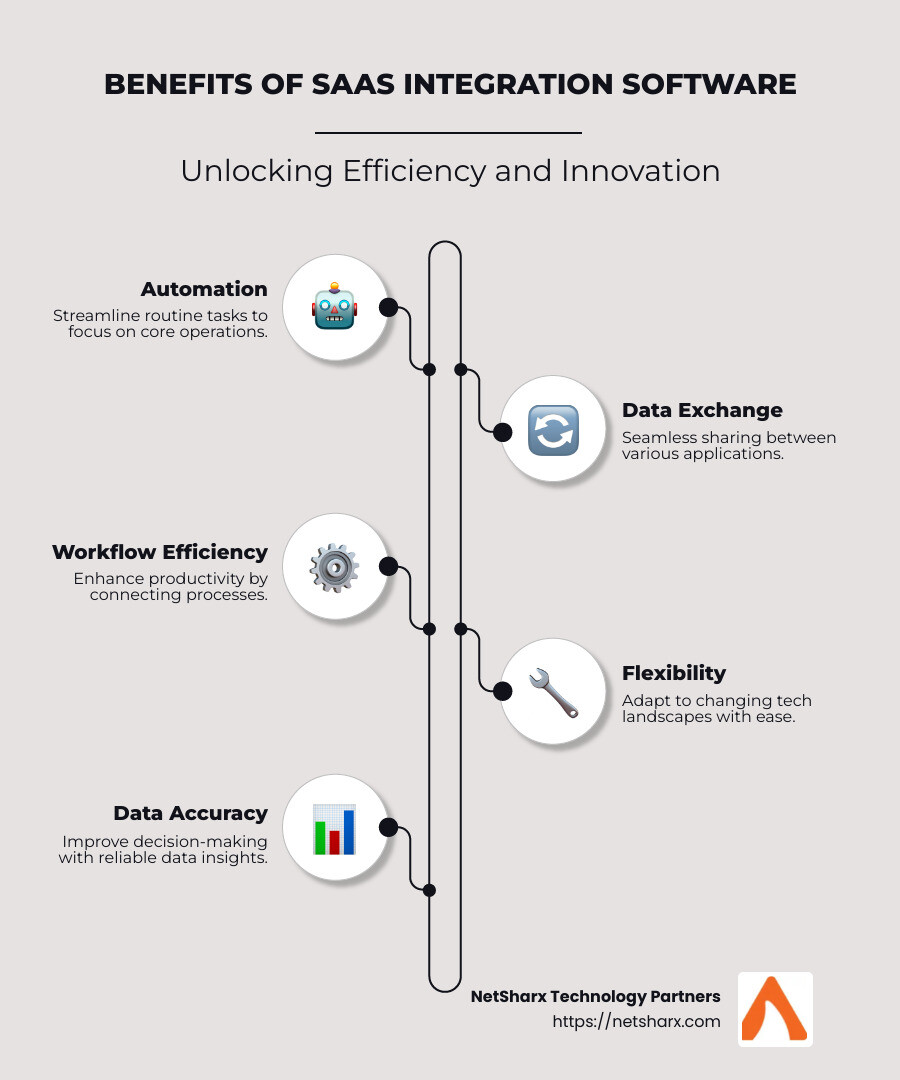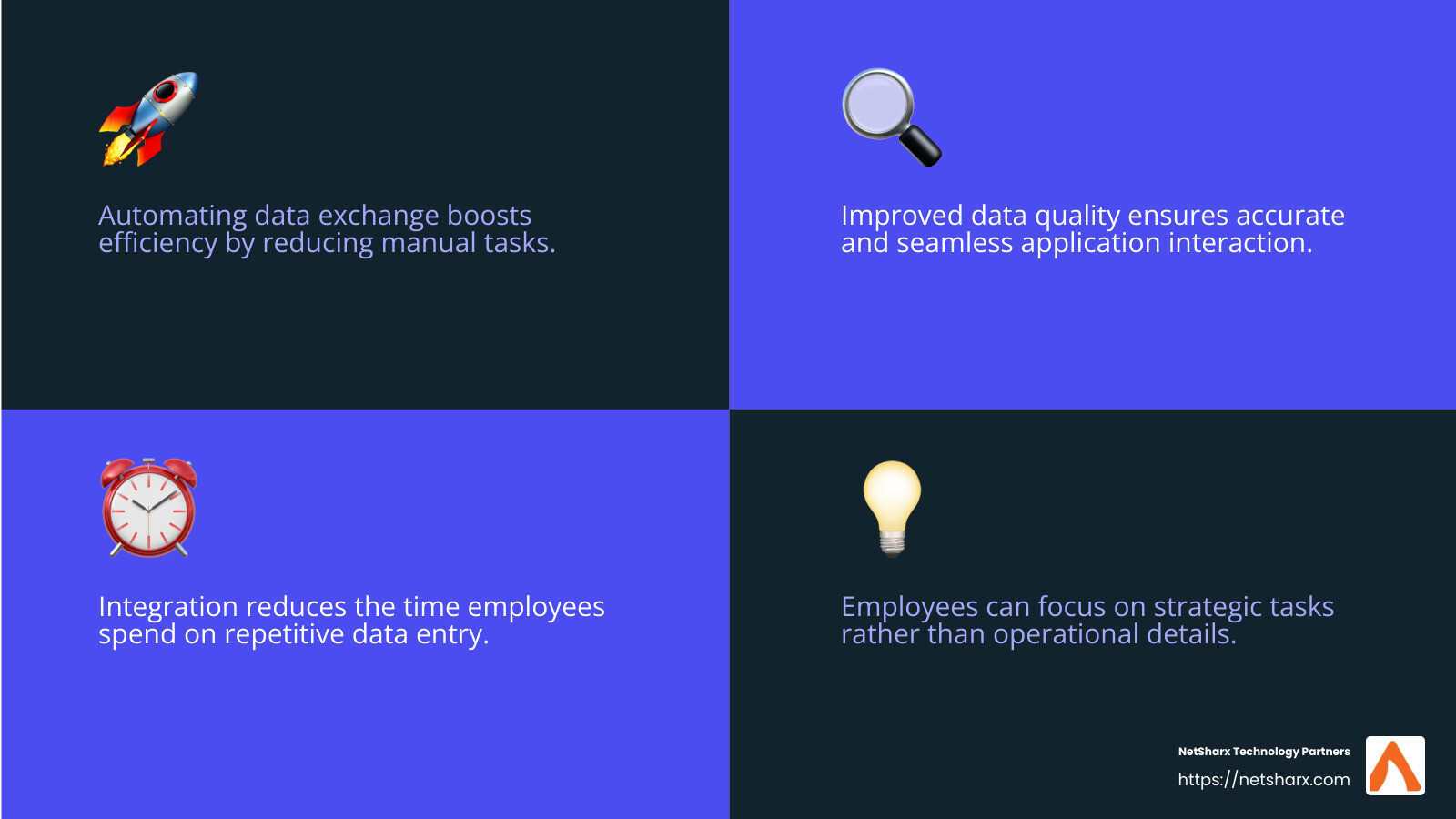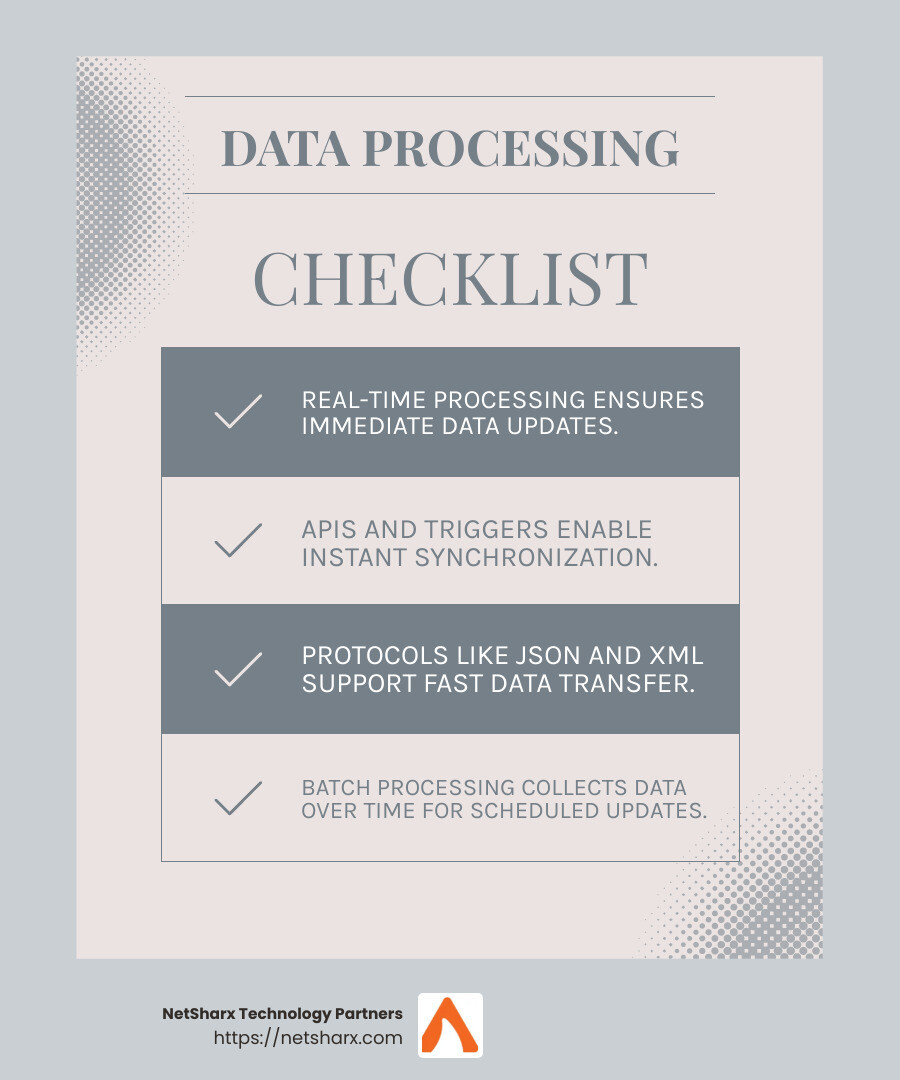SaaS integration software is a crucial tool for modern businesses looking to seamlessly connect different applications and automate workflows. It’s all about making sure various software systems can talk to each other effortlessly, driving efficiency and functionality across your business processes. Whether it’s enhancing data exchange or streamlining operations, SaaS integration is the bridge that connects your digital landscape.
- What is SaaS integration software? It’s a solution that enables different software applications, whether cloud-based or on-premises, to communicate and share data seamlessly through standard protocols like APIs.
- Why is it important? It eliminates data silos, promotes workflow automation, improves flexibility, and enables efficient data sharing between disparate applications.
- How does it benefit businesses? By automating routine tasks and improving data accuracy, SaaS integration allows businesses to focus on core operations without being bogged down by complex data management tasks.
In an changing digital world, integrating cloud-based services effectively ensures that enterprises remain agile and competitive. For a CIO juggling multiple tech platforms, understanding and utilizing SaaS integration can be the key to overcoming tight budgets and rapidly changing technological demands. By connecting these digital dots, companies open up new potentials for innovation and growth without hefty upfront investments.
Understanding SaaS Integration
SaaS integration is all about connecting different software applications so they can share data and work together smoothly. Imagine a symphony orchestra where each instrument plays its part perfectly in sync with the others—that’s what SaaS integration aims to achieve with your business software.
Benefits of SaaS Integration
Efficiency is a major perk of SaaS integration. By automating data exchange between applications, businesses can cut down on manual tasks and reduce human error. This allows employees to focus on more strategic work instead of getting bogged down in repetitive data entry.
Data quality improves significantly with integration. When applications share data seamlessly, you get a single source of truth. This ensures that everyone in the organization is working with the most accurate and up-to-date information.
Flexibility is another advantage. SaaS integration allows businesses to easily adapt to new tools and processes as they grow. With integrated systems, you can quickly respond to market changes or customer needs without overhauling your entire tech stack.
Challenges in SaaS Integration
Despite its benefits, SaaS integration isn’t without its problems. Vendor limitations can pose a challenge. Different SaaS providers often have unique APIs and data formats, making it tricky to connect them without custom solutions.
Development challenges abound when creating custom integrations. It requires specialized knowledge and time to ensure that data flows correctly between systems. This can lead to increased costs and potential delays if not handled properly.
Performance issues can also crop up. Data transfer speed and reliability are crucial, especially when dealing with large datasets or real-time updates. Any lag can disrupt workflows and impact user experience.
In summary, while SaaS integration offers tremendous benefits in terms of efficiency, data quality, and flexibility, it’s important to be aware of the potential challenges. By understanding these, businesses can better prepare and strategize for successful integration projects.
Types of SaaS Integration Software
When it comes to SaaS integration software, there are three main types that businesses can choose from: Integration Platform as a Service (iPaaS), Embedded SaaS Integration Platforms, and Unified APIs. Each type has its unique features and benefits, so let’s break them down.
Integration Platform as a Service (iPaaS)
iPaaS is like a bridge that connects different software applications, making it easier for them to “talk” to each other. Think of it as a universal translator for your software stack.
-
No-code and automation: iPaaS platforms often come with no-code or low-code interfaces, meaning you don’t need to be a tech wizard to set them up. They allow you to automate data flows between apps, freeing up your team from manual tasks.
-
Streamlined data flows: With iPaaS, you can create seamless connections between applications, ensuring data moves smoothly and accurately across your systems. This is crucial for maintaining efficiency and data integrity.
-
Example: Imagine a retail business using iPaaS to automatically sync inventory data between its e-commerce platform and warehouse management system, ensuring stock levels are always accurate.
Embedded SaaS Integration Platforms
Embedded iPaaS platforms are designed specifically for SaaS providers who want to offer their customers built-in integration capabilities.
-
Native integrations: These platforms allow SaaS companies to provide out-of-the-box integrations that require minimal setup from the end user. It’s like having a pre-installed app on your phone that just works without any hassle.
-
Authentication and monitoring: Embedded iPaaS handles the complexities of authentication and provides monitoring solutions, so users can trust that their data is secure and the integrations are running smoothly.
-
Example: A SaaS company might use an embedded iPaaS to integrate its CRM with popular email marketing tools, allowing users to effortlessly sync contact lists and track campaign performance.
Unified APIs
Unified APIs offer a different approach by providing a single API that can interact with multiple third-party APIs.
-
Common model: They simplify the process by offering a common data model, so you don’t have to deal with the quirks of each individual API. It’s like having one master key that opens multiple doors.
-
Multiple APIs and abstraction: Unified APIs abstract the complexities of dealing with various SaaS APIs, enabling developers to make a single request that communicates with multiple services.
-
Example: A logistics company might use a unified API to pull shipping data from several carriers, allowing it to track packages across different networks with a single interface.
In summary, whether you’re looking for a user-friendly way to connect apps, a seamless integration experience for your customers, or a streamlined API solution, there’s a SaaS integration software that fits the bill. Each type of software has its strengths, so it’s important to choose the one that aligns best with your business needs and technical capabilities.
How SaaS Integration Software Works
Real-time vs Batch Processing
SaaS integration software is like the brain of your digital operations, ensuring that data moves where it needs to go, when it needs to go there. One of the key aspects of this is understanding how data is processed—either in real-time or in batches.
Real-time Processing:
This approach involves data being synchronized instantly as events occur. Imagine a customer placing an order online, and the order details immediately updating in your inventory system. This kind of real-time data exchange is made possible through APIs and triggers.
-
APIs and Triggers: APIs act as messengers between applications, allowing them to exchange information based on specific triggers. For example, when a new order is placed, a trigger activates the API to update the inventory.
-
Protocols: Real-time updates rely on protocols like JSON or XML to ensure data is transferred quickly and accurately.
Batch Processing:
In contrast, batch processing involves collecting data over a period and then transferring it at scheduled intervals. This method is useful when immediate updates aren’t necessary, or when dealing with large volumes of data.
- Use Case: A company might use batch processing to update its sales records from the previous day once every night, rather than updating continuously throughout the day.
Both real-time and batch processing have their pros and cons, and the choice between them depends on the specific needs of your business.
Security and Compliance
When integrating various SaaS applications, ensuring data security and compliance is crucial. Here’s how SaaS integration software addresses these concerns:
Data Protection:
– Encryption: Data is encrypted during transfer to prevent unauthorized access. This means even if data is intercepted, it remains unreadable without the proper decryption key.
- Access Controls: These are like digital locks, ensuring that only authorized users can access sensitive data. This is especially important for maintaining compliance with regulations like GDPR and HIPAA.
Compliance:
– Regular Audits: Many SaaS integration platforms conduct regular security audits to ensure they meet industry standards and regulatory requirements.
By prioritizing security and compliance, SaaS integration software helps businesses protect their data while enjoying the benefits of connected systems. This ensures that your data stays safe, and your business remains compliant with necessary regulations.
In the next section, we’ll dive into some frequently asked questions about SaaS integration software, shedding light on common queries and concerns.
Frequently Asked Questions about SaaS Integration Software
What is SaaS integration software?
SaaS integration software is a tool that connects different cloud-based applications, allowing them to share data seamlessly. Imagine it as a translator between apps, using APIs to enable communication. This software ensures that information flows smoothly between systems, eliminating data silos and enhancing productivity. By linking various applications, such as CRM and accounting platforms, businesses can automate processes, reduce manual data entry, and improve data accuracy.
How does SaaS integration improve business processes?
SaaS integration transforms business operations by automating workflows and improving efficiency. When apps are connected, they can share data in real-time, which means updates happen instantly across platforms. This automation reduces the need for repetitive tasks, freeing up employees to focus on more strategic work. Moreover, by ensuring data is consistent and accurate across all systems, businesses can make informed decisions quickly. This not only boosts productivity but also improves the quality of customer interactions.
What are common challenges in SaaS integration?
Integrating SaaS applications isn’t without its problems. One major challenge is the technical expertise required to set up and maintain these integrations. Not every team has the in-house skills needed, which can lead to delays and increased costs. Performance issues can also arise, especially if the integration isn’t optimized for the specific needs of the business. Additionally, maintaining these integrations over time can be complex, as updates or changes to one application can affect the entire system. Lastly, ensuring data security and compliance is a constant concern, requiring robust measures like encryption and access controls to protect sensitive information.
In the next section, we’ll explore how NetSharx Technology Partners can help businesses steer these challenges with custom solutions.
Conclusion
Navigating the complex world of SaaS integration can be daunting, but that’s where we, at NetSharx Technology Partners, step in. Our mission is to simplify technology change with custom solutions custom to your unique needs. With our extensive network of providers and agnostic approach, we ensure you get the best-fit technology without bias.
Technology change is inevitable, and staying ahead requires the right tools and expertise. Our team of solution engineers are dedicated to guiding you through this journey, making sure you leverage the full potential of SaaS integration software. Whether it’s streamlining workflows, enhancing data quality, or ensuring security compliance, we’re here to support you every step of the way.
By partnering with us, you gain access to a wealth of resources and knowledge, ensuring your business can adapt and thrive in a rapidly evolving digital landscape. Our commitment to transparency, trust, and long-term relationships means you can focus on what you do best, while we handle the intricacies of technology change.
Ready to transform your business with seamless SaaS integrations? Explore our solutions and find how we can connect the dots for you.





